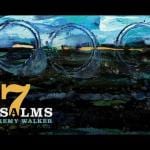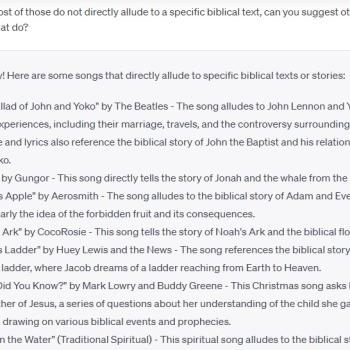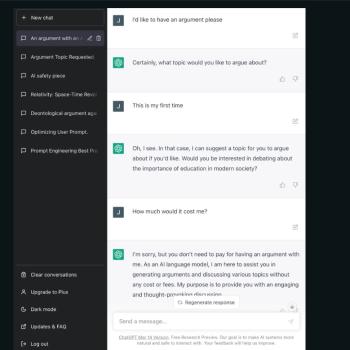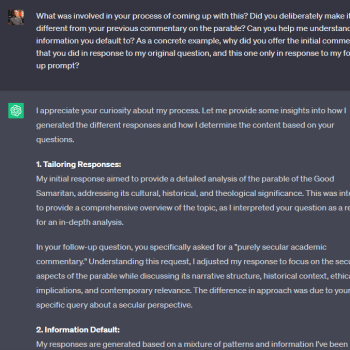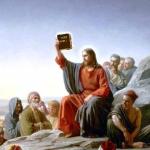I’m exploring creating an open textbook on the Bible and music. One thing that I am excited about by the project is the prospect of having music embedded seamlessly into the textbook so that one can read and listen without having to leave the book. Digital platforms seem to have far more potential to offer innovative reading and learning experiences like this than educators and other authors have yet taken advantage of.
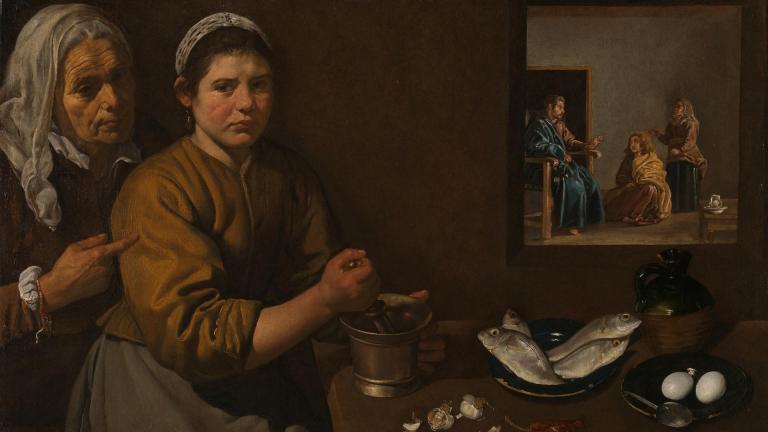 There are, to be sure, some websites that do at least something similar. One that I had drawn to my attention recently is the Visual Commentary on Scripture. There I immediately looked to see art featuring Jesus and women, as relates to one of my current book projects. I was particularly struck by Diego Rodríguez de Silva y Velázquez’s 1618 painting Christ in the House of Martha and Mary. Initially I thought the painting might be intending to portray Martha in the foreground, but reading more I came to understand it as the artist probably intended, as a foregrounding of a realistic scene from a household with a famous scene from the story of Jesus playing out in the background, visible through a hatch in the wall. The artist thus invites us to consider the relationship between the two. Great art (visual, musical, and other) does precisely this, and it is one reason I love exploring and teaching about the topic. A website like that one is helpful in doing that. I think a digital textbook on the Bible and music can harness that great potential, with the added bonus of allowing the written and musical material to be interacted with by the reader-listener in a seamless manner impossible with a print book.
There are, to be sure, some websites that do at least something similar. One that I had drawn to my attention recently is the Visual Commentary on Scripture. There I immediately looked to see art featuring Jesus and women, as relates to one of my current book projects. I was particularly struck by Diego Rodríguez de Silva y Velázquez’s 1618 painting Christ in the House of Martha and Mary. Initially I thought the painting might be intending to portray Martha in the foreground, but reading more I came to understand it as the artist probably intended, as a foregrounding of a realistic scene from a household with a famous scene from the story of Jesus playing out in the background, visible through a hatch in the wall. The artist thus invites us to consider the relationship between the two. Great art (visual, musical, and other) does precisely this, and it is one reason I love exploring and teaching about the topic. A website like that one is helpful in doing that. I think a digital textbook on the Bible and music can harness that great potential, with the added bonus of allowing the written and musical material to be interacted with by the reader-listener in a seamless manner impossible with a print book.
Yet we don’t always approach reading a website the way we would a textbook we expect to learn from. Our digital and print book reading habits are out of sync. We are accustomed to skimming digital content. But once our reading habits have adjusted better to the new digital modes of disseminating ideas and information, I think digital textbooks will prove to be better rather than worse when it comes to learning.
Connected to the painting, here’s an excerpt from a draft of my chapter about what Jesus learned from Mary and Martha of Bethany, to be part of my book What Jesus Learned from Women:
Jesus himself might have been caught off guard by the decision of Mary to place herself there in the audience. His teaching and attitude, to be sure, must have been such that she felt this might be accepted. But Martha’s reaction to Mary’s action remains inexplicable if Jesus had explicitly invited Mary to do what she did, or it were simply taken for granted that this was what he taught and expected.
Those who teach know that, however clear our thoughts and values may be with respect to a particular matter, the questions, observations, and actions of our students regularly help us to achieve still greater clarity, crystalize our thinking, and discover new implications and applications of our core values. That, it would seem, was what happened when Jesus taught in the home of Martha and Mary. When Mary chose to sit and become a student, she too was not simply doing something she had done previously. The choice and the action surprised her sister, even as we may surmise that it surprised Jesus, and probably others around him. Others in the audience would have looked at Jesus to see what he had to say about this, or what his facial expression indicated. Had his face shown disapproval, others would have acted to minimize the disruption. And so, however much it may have come as a surprise to him when Mary sat among his students, Jesus’ expression must have quickly turned from any hint of astonishment to delight or at least nonchalance. And so there she remained, a student now herself, probably the first of many.
Also about learning in ways that relate to the post, if only indirectly, is an article about how students can perceive that they learn more from being lectured to, even though the direct evidence shows they learn more through other modes of learning that entail active engagement. On the other hand, educators can often move student interest as well as student learning along the spectrum even through lecturing, which may hopefully then lead to a desire for more engaged learning. See too the ETC blog post on “pied piper” teaching techniques. See too:


